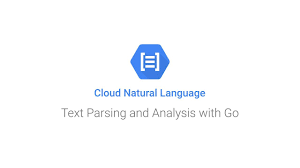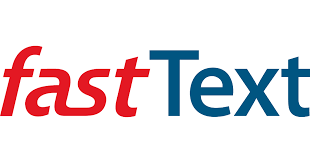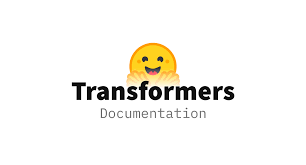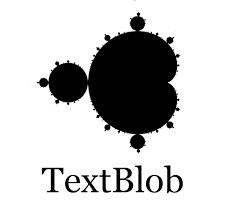Natural Language Processing (NLP) has become an integral part of the tech industry, and with the advancement of Artificial Intelligence (AI), it has opened up new opportunities for businesses and individuals. NLP is a field of study that focuses on the interaction between human language and computers. With NLP, machines can understand, interpret and generate human language, making it easier for us to communicate with them.
The demand for NLP tools has increased in recent years, as it provides businesses with the ability to extract insights from vast amounts of unstructured data, improve customer experience, and automate processes. In this blog, we will explore some of the best AI-powered NLP tools for sentiment analysis, entity recognition, topic modeling, language translation, and generation.
Google Cloud Natural Language API

Google Cloud Natural Language API is a powerful AI tool for analyzing text and extracting insights such as sentiment analysis, entity recognition, and content classification. The tool uses machine learning algorithms to understand the nuances of human language, making it a valuable asset for businesses seeking to enhance their customer experience, improve their products, or perform market research. The API can process large volumes of data quickly and accurately, allowing for real-time analysis of customer feedback or social media conversations. Additionally, the tool offers customizable settings, including the ability to train models with custom data and fine-tune the API's settings to suit specific use cases. With its comprehensive analysis capabilities and ease of use, Google Cloud Natural Language API is an excellent choice for businesses seeking to gain insights from text-based data.
Pros
Cons
Overall Rank
Amazon Comprehend

Amazon Comprehend is a powerful AI tool developed by Amazon Web Services (AWS) for natural language processing (NLP) tasks. With the help of this tool, users can extract valuable insights from large volumes of unstructured text data in real-time. Amazon Comprehend uses machine learning algorithms to identify key phrases, entities, and sentiment in the text data, which helps businesses to analyze customer feedback, social media posts, emails, and other sources of unstructured data. Additionally, it also supports multi-language analysis, which enables businesses to understand the sentiments and emotions of their customers across different languages. Overall, Amazon Comprehend is an effective tool for businesses looking to gain valuable insights from their unstructured text data in real-time.
Pros
Cons
Overall Rank
Microsoft Azure Text Analytics

Microsoft Azure Text Analytics is an artificial intelligence tool that enables organizations to extract valuable insights and sentiment analysis from unstructured text data. This tool uses natural language processing algorithms to analyze large volumes of text data, such as social media posts, customer reviews, and support tickets, and extract relevant information such as named entities, key phrases, language detection, sentiment analysis, and more. The insights gained from Azure Text Analytics can help businesses make data-driven decisions, improve customer satisfaction, and gain a competitive advantage in the market.
Pros
Cons
Overall Rank
IBM Watson Natural Language Understanding

IBM Watson Natural Language Understanding (NLU) is an advanced AI tool that uses deep learning and natural language processing techniques to analyze text. With Watson NLU, businesses can gain insights into customer sentiment, identify emerging trends, and extract relevant information from large volumes of unstructured data. This powerful tool can be used to monitor social media feeds, analyze customer feedback, and extract key information from unstructured documents, such as contracts and legal agreements. Watson NLU's advanced algorithms can also identify entities and relationships between them, providing valuable context to the data being analyzed. Overall, IBM Watson NLU is a valuable tool for businesses looking to gain actionable insights from unstructured data.
Pros
Cons
Overall Rank
SpaCy

SpaCy is a powerful and efficient natural language processing library that is widely used for text processing tasks such as named entity recognition, part-of-speech tagging, dependency parsing, and text classification. SpaCy is designed to be fast, intuitive, and user-friendly, making it an ideal tool for both researchers and developers. One of the major strengths of SpaCy is its ability to handle large volumes of text data quickly and efficiently. SpaCy achieves this through its efficient algorithms and data structures that are optimized for performance. Additionally, SpaCy offers a wide range of pre-trained models that can be used for a variety of tasks, including language modeling, sentiment analysis, and text classification.
Pros
Cons
Overall Rank
NLTK (Natural Language Toolkit)
.png)
The Natural Language Toolkit (NLTK) is a powerful and popular open-source Python library designed for processing human language data. It provides easy-to-use interfaces for a wide range of natural language tasks, including tokenization, stemming, part-of-speech tagging, sentiment analysis, and machine learning. NLTK also includes a comprehensive collection of corpora, lexicons, and datasets, which makes it an excellent tool for research and experimentation in natural language processing (NLP). With its extensive documentation and active community, NLTK is a reliable and user-friendly toolkit for both beginners and advanced NLP practitioners.
Pros
Cons
Overall Rank
Stanford NLP

The Stanford Natural Language Processing (NLP) Group has developed an advanced AI tool that uses deep learning models to extract meaning from text data. The tool employs state-of-the-art algorithms to perform various NLP tasks such as parsing, sentiment analysis, named entity recognition, and coreference resolution. The tool can analyze text in multiple languages, making it a valuable resource for researchers, developers, and businesses that operate globally. It also offers a user-friendly interface that allows users to upload text data and visualize the results in a clear and concise manner. Additionally, the tool is highly customizable, allowing users to train their own models on specific datasets to improve accuracy and performance.
Pros
Cons
Overall Rank
Gensim

Gensim is an open-source natural language processing (NLP) library that enables users to process large amounts of unstructured text data. It offers a wide range of functionalities, including topic modeling, document similarity analysis, and word embeddings, which allow users to represent words in a high-dimensional space. One of the major advantages of Gensim is its scalability, as it can efficiently process large datasets and can be used for distributed computing. Additionally, Gensim provides an easy-to-use interface for building and training machine learning models, making it an ideal tool for NLP researchers and practitioners.
Pros
Cons
Overall Rank
FastText

FastText is an AI tool developed by Facebook's AI Research (FAIR) team for text classification and language identification tasks. It uses a neural network architecture to efficiently handle large datasets and can handle a wide range of languages, including languages with limited training data. FastText also has the ability to handle out-of-vocabulary words and is highly customizable with various hyperparameters that can be adjusted to improve performance. Its speed and accuracy make it a popular choice for natural language processing tasks in industry and academia alike.
Pros
Cons
Overall Rank
PyTorch-Transformers

PyTorch-Transformers is a powerful tool for natural language processing tasks that uses deep learning techniques. It is built on top of PyTorch, a popular open-source machine learning library, and provides pre-trained models for various tasks such as language translation, text classification, question answering, and more. PyTorch-Transformers also allows users to fine-tune these pre-trained models on their own datasets, enabling them to achieve state-of-the-art performance on their specific tasks. Additionally, it provides a user-friendly API and a wide range of customization options, making it easy for both beginners and experts to use.
Pros
Cons
Overall Rank
Hugging Face

Hugging Face is an AI tool that offers state-of-the-art natural language processing (NLP) capabilities. The tool provides a user-friendly interface for developers and data scientists to access various NLP models and datasets. Hugging Face also offers pre-trained models, which allows users to fine-tune the models with their own data, making it a versatile tool for various NLP tasks such as sentiment analysis, named entity recognition, and text classification. Additionally, Hugging Face's transformer models have achieved high performance in various benchmarks, making it a popular choice among researchers and developers in the NLP community.
Pros
Cons
Overall Rank
TextBlob

TextBlob is an easy-to-use and powerful natural language processing (NLP) library for Python. It provides a simple interface for common NLP tasks such as sentiment analysis, part-of-speech tagging, and named entity recognition. One of the unique features of TextBlob is its ability to perform language translation and language detection. It also allows for customization and training of its models to improve its accuracy on specific domains. With TextBlob, users can easily extract valuable insights from text data and automate text processing tasks.
Pros
Cons
Overall Rank
CoreNLP

CoreNLP is a powerful natural language processing tool developed by Stanford University. It provides a wide range of features such as tokenization, part-of-speech tagging, named entity recognition, dependency parsing, sentiment analysis, and coreference resolution. These capabilities make it an essential tool for many natural language processing tasks, including text classification, information extraction, and text summarization. The tool is open-source and written in Java, which makes it easy to integrate into existing projects. Furthermore, it supports several programming languages such as Python, Ruby, and JavaScript, allowing developers to use CoreNLP in their preferred language.
Pros
Cons
Overall Rank
OpenNLP

OpenNLP (Natural Language Processing) is an open-source Java-based library used to perform various natural language processing tasks such as sentence detection, tokenization, part-of-speech tagging, named entity recognition, parsing, and coreference resolution. It provides an easy-to-use API for developers to integrate NLP capabilities into their applications and has been widely used in various industries such as social media analysis, customer feedback analysis, and chatbot development. OpenNLP uses statistical models to predict and classify text, making it efficient and accurate in processing large volumes of unstructured text data.
Pros
Cons
Overall Rank
Apache Lucene

Apache Lucene is a high-performance, full-featured text search engine library written in Java. It is used to build search applications with powerful search capabilities like full-text search, hit highlighting, faceted search, and many more. Lucene offers many advanced features, including near real-time indexing, efficient search algorithms, support for various query types, and configurable scoring. It also provides the ability to customize the search functionality as per the specific requirements of the application. With its robust architecture, scalability, and ease of integration, Apache Lucene has become a popular choice for developing search applications across various domains, including e-commerce, finance, healthcare, and more.
Pros
Cons
Overall Rank
AllenNLP

AllenNLP is an open-source natural language processing (NLP) tool that offers a range of features to develop and deploy AI models for various NLP tasks. It provides pre-trained models, such as named entity recognition, part-of-speech tagging, and sentiment analysis, which can be fine-tuned to cater to specific needs. Additionally, AllenNLP enables users to build custom models from scratch with its intuitive interface, making it an excellent tool for researchers and developers who want to create their NLP models without being experts in machine learning. Its documentation is thorough, and it has a supportive community that offers help and guidance to users.
Pros
Cons
Overall Rank
Rasa NLU

Rasa NLU is a powerful open-source natural language understanding (NLU) tool that enables developers to build chatbots, virtual assistants, and other conversational AI applications. It uses machine learning algorithms to understand natural language input and extract relevant information from it. One of the key advantages of Rasa NLU is its flexibility and customizability. Developers can train and fine-tune the model to recognize specific entities and intents, and integrate it with other components of their conversational AI system. Rasa NLU also provides a user-friendly interface for annotating training data, making it easier to create high-quality training datasets.
Pros
Cons
Overall Rank
In conclusion, the advancement of Natural Language Processing (NLP) has brought about a revolution in the world of computing, making it easier for machines to understand and interpret human language. With the increasing demand for NLP tools, several AI-powered tools have emerged, providing individuals and businesses with a diverse range of options to choose from. We have discussed some of the best AI tools for NLP in this blog, including Google Cloud Natural Language API, Amazon Comprehend, spaCy, NLTK, and GPT-3. These tools have unique features and functionalities that cater to different needs, ranging from sentiment analysis, entity recognition, topic modeling, to language translation and generation. As NLP continues to evolve, it is essential to keep up with the latest advancements and integrate the best tools into your workflow. By doing so, you can streamline your processes, improve productivity, and gain insights into the vast amounts of unstructured data at your disposal. The future of NLP looks bright, and we can only expect more exciting tools and features to emerge in the coming years.
